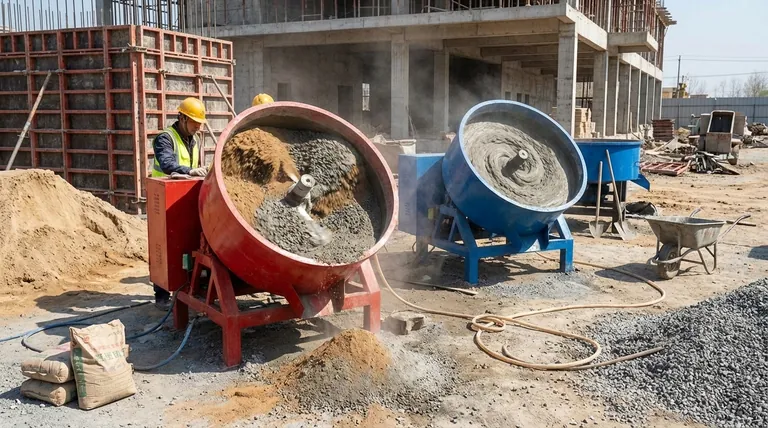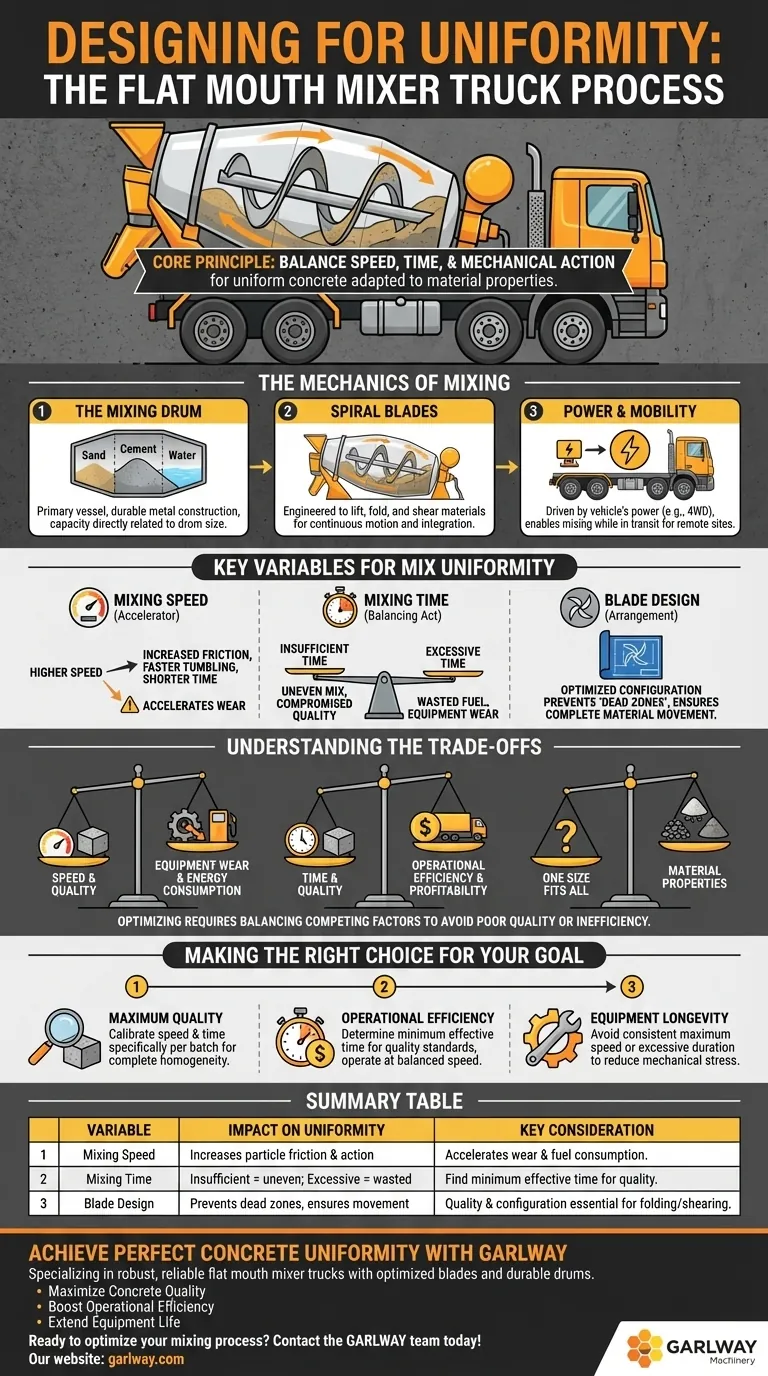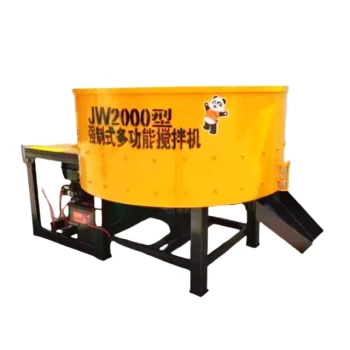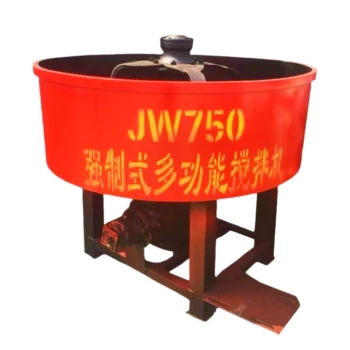To ensure uniform mixing, the design of the process in a flat mouth mixer truck hinges on the precise control of three critical factors: mixing speed, mixing time, and the physical arrangement of the mixing blades. These elements work in concert, driven by the truck's power system, to continuously tumble and combine raw materials like sand, cement, and water into a homogenous final product.
The core principle is that achieving uniform concrete is not about maximizing any single variable, but about finding the right balance between speed, duration, and mechanical action, all of which must be adapted to the specific properties of the raw materials being used.

The Mechanics of Mixing
A flat mouth mixer truck's effectiveness is rooted in its fundamental design, which enables it to mix concrete while in transit. Understanding these core components reveals how uniformity is achieved.
How the Mixing Drum Works
The drum is the primary vessel where mixing occurs. It is constructed from durable metal to withstand the constant abrasive action of the raw materials. Its size is directly proportional to the truck's capacity.
The Critical Role of Spiral Blades
Inside the drum are spiral mixing blades. As the drum rotates, these blades are engineered to continuously lift, fold, and shear the sand, cement, and water. This constant motion is the primary mechanism that ensures all components are thoroughly and evenly integrated.
Power and Mobility
The entire mixing drum is driven by the vehicle's power system, often a four-wheel-drive chassis. This design allows for mixing to occur while the truck is moving, a key advantage for reaching remote or difficult construction sites and ensuring the concrete is ready upon arrival.
Key Variables for Mix Uniformity
While the mechanical design provides the capability, the operator's control over key variables determines the final quality and uniformity of the concrete.
Mixing Speed: The Accelerator
Increasing the rotational speed of the drum, within safe operational limits, directly enhances the mixing process. Higher speeds increase friction between particles and accelerate the rolling and tumbling action, leading to a more uniform mix in a shorter amount of time.
Mixing Time: The Balancing Act
Controlling the duration of the mix is crucial. Insufficient time is a primary cause of uneven mixing, which compromises the structural quality of the concrete. Conversely, excessive mixing provides no additional benefit, wastes fuel, and causes unnecessary wear on the drum and blades.
Blade Design and Arrangement
The quality and configuration of the mixing blades are essential for effective mixing. Well-designed blades ensure that the entire batch of material is kept in motion, preventing "dead zones" where materials can settle and remain unmixed.
Understanding the Trade-offs
Optimizing for uniformity requires balancing competing factors. Making a poor trade-off can lead to low-quality concrete or inefficient operation.
Speed vs. Equipment Wear
While higher speeds can improve mix quality, they also increase energy consumption and accelerate wear on the mechanical components. Running constantly at maximum speed can lead to higher maintenance costs and shorter equipment life.
Time vs. Operational Efficiency
Allowing for adequate mixing time is non-negotiable for quality. However, extending this time unnecessarily reduces the number of deliveries that can be made in a day, directly impacting job site efficiency and profitability.
"One Size Fits All" vs. Material Properties
The ideal speed and time are not constant. Different raw materials—varying aggregate sizes, cement types, or water-to-cement ratios—have different mixing requirements. A process optimized for one type of mix may be insufficient for another.
Making the Right Choice for Your Goal
To achieve consistent results, align your operational parameters with your primary objective.
- If your primary focus is maximum concrete quality: Calibrate the mixing time and speed specifically for each batch's raw materials, prioritizing a complete and homogenous mix over speed.
- If your primary focus is operational efficiency: Determine the minimum effective mixing time that still meets all quality standards and operate at a balanced speed to conserve fuel and complete jobs quickly.
- If your primary focus is equipment longevity: Avoid consistently running at maximum speed or for excessive durations to reduce mechanical stress and long-term wear.
Mastering the interplay of these design variables is the key to producing high-quality, uniform concrete every time.
Summary Table:
| Variable | Impact on Uniformity | Key Consideration |
|---|---|---|
| Mixing Speed | Higher speed increases particle friction and mixing action. | Higher speed accelerates equipment wear and fuel consumption. |
| Mixing Time | Insufficient time causes uneven mixing; excessive time wastes resources. | Find the minimum effective time that meets quality standards. |
| Blade Design | Well-designed blades prevent dead zones and ensure complete material movement. | Quality and configuration are essential for effective shearing and folding. |
Achieve Perfect Concrete Uniformity with GARLWAY
Struggling to balance concrete quality, job site efficiency, and equipment maintenance? The right mixer truck makes all the difference.
GARLWAY specializes in construction machinery, offering robust and reliable flat mouth mixer trucks designed for construction companies and contractors globally. Our mixers feature optimized spiral blade designs and durable drums to deliver a homogenous mix batch after batch.
Let us help you:
- Maximize Concrete Quality: Ensure every delivery meets the highest standards.
- Boost Operational Efficiency: Complete more jobs per day without compromising on mix integrity.
- Extend Equipment Life: Our durable designs reduce long-term wear and maintenance costs.
Ready to optimize your mixing process? Contact the GARLWAY team today for a consultation and discover the right solution for your project needs!
Visual Guide

Related Products
- Ready Mixer Machine for Construction Ready Mix Machinery
- Portable Ready Mix Concrete Mixer Equipment
- Portable Concrete Mixer Machine Equipment for Mixing Concrete
- Commercial Construction Mixer Machine for Soil Cement Mixing Concrete
- Auto Concrete Cement Mixer Machine New
People Also Ask
- What should be considered regarding the output of a concrete mixer? Match Capacity to Your Project Scale
- When was the first concrete mixer developed and by whom? Discover the 1900 Breakthrough
- What is the average lifespan of a concrete mixer? Maximize Your Equipment's Lifespan & ROI
- What was significant about Roscoe Lee's 1934 concrete mixer design? Pioneering Modular Construction Equipment
- What safety considerations are important for concrete mixer operation? A Guide to Proactive Risk Management



















